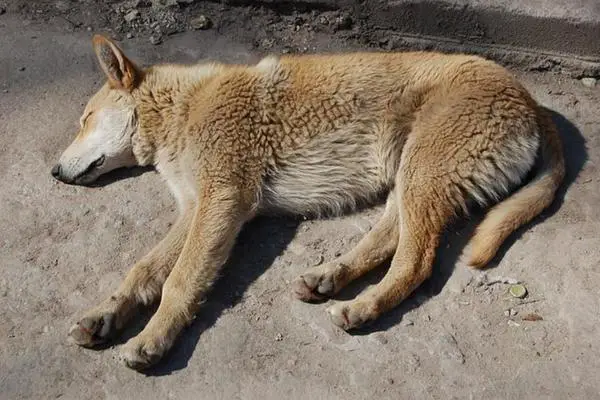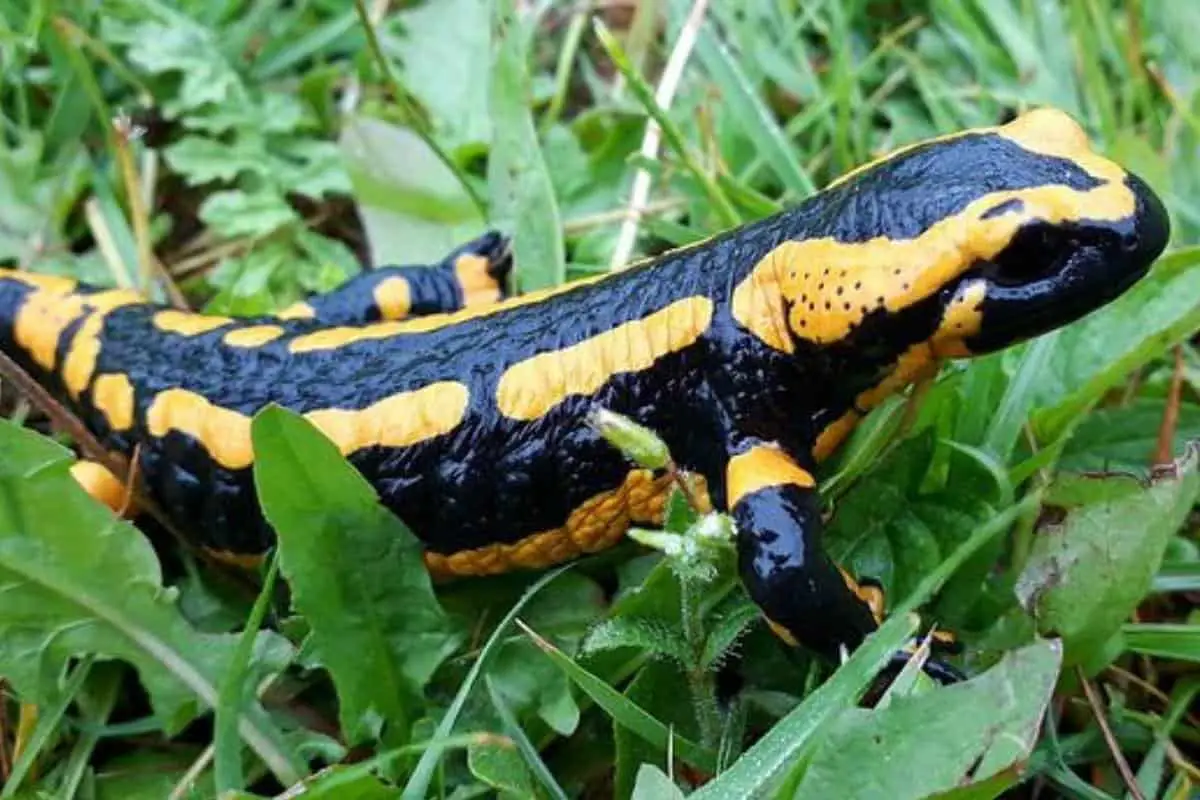When your dog finishes an unsupervised bathroom break or quick trail exploration alone and returns to your side acting strange, all kinds of worries enter your head and your heart. Looking around the area for any reason your dog could be ill you finally see one- a group of salamanders! Your heart races as you look at your dog and face a worst-case scenario(gulp)… your dog has just eaten a salamander.
There are so many consequences that could happen when a dog eats a salamander. Poisoning is the first “worst-case” scenario but not the only risk to be worried about. Salamanders are vectors (carriers) of all sorts of issues including roundworms, tapeworms, flukes, and Salmonella.
What to do if your dog eats a salamander

Knowledge is power and preparation is key in situations like these that feel out of control. In an emergency involving someone you love; it is easy to panic and forget that time is of the essence. This guide will give you some basic steps to follow if your dog gets into this situation. This is what to do if your dog eats a salamander.
1. Learn more about Mother Nature

A salamander “snack” does not always mean an immediate death sentence for your dog. Salamanders and their poisons are widely different depending on how many toxins or bacteria live on the salamanders’ skin. With hundreds of salamander species, It is very advantageous to know what type of salamanders can be found in the dog’s location( even better if you know which one your dog ate).
Knowing the type and toxicity of salamanders in your area can help determine the risk or mortality of your dog, and how fast you need to get your furry companion to a vet. Salamanders contain two kinds of neurotoxins: Samandarin and Tetrodotoxin (TTX). Getting your hands on an identification chart can help in determining the level and types of poison the dog has ingested.
Here are the locations where many extremely poisonous salamanders call home:
- California
- Oregon
- Washington
- Alaska
- Nevada
- North America (eastern half)
- Canada (maritime provinces)
- Europe
2. Contain the situation

Decontamination using water as a mouth rinse can help flush away any toxic residue that remains in your dog’s mouth. Some salamanders and newts release skin barbs to prevent getting swallowed. Because salamanders are hard to ingest, it helps to do a finger sweep to extract the salamander and/or any part of it that remains inside.
3. Read the room
There are clear symptoms and indicators that indicate a dog has interacted with or swallowed a poisonous salamander. Closely monitor your dog and contact a vet immediately if the following signs of poisoning, infection or an affliction become apparent:

Poison:
- Drooling or Foaming at the mouth (way more than usual)
- Drinking (constantly)
- Eyes and mouth are constantly being touched with their paws
- Staying/ Lying very still in one location
- Not hungry for treats/food
- Crying and whimpering
- Throwing up and having diarrhea
- The inside of the mouth is very pale(nonpink), and the gums look yellowish
- There is more than usual nervous or fearful behavior
- Movements are choppy and not very normal
- The eyes are no longer straight, closing excessively
- Seizures and trembling start happening
- He will not wake up or has become unaware of his surroundings
Bacteria [Salmonella]:
- Throwing up
- Diarrhea
- Not eating
- Sleeping
- Swollen neck (lymph nodes)
- Unresponsive to other pets or people
- An extremely fast heartbeat.
Parasite:
- Weight loss
- The swollen underside (abdomen area)
- Weakness or lack of energy
- Eyes have a yellowish color to them
4. Make a phone call:
Always reach out to a vet, if you feel that your dog has eaten and been exposed to unknown risks such as salamanders. No matter which type of salamander has been eaten, even mildly poisonous varieties carry a high risk of parasitic and bacterial infections for your dog. The earlier medical attention is given to your dog, the greater chance that your dog stays alive and recovers.
5. Take the advice that is given
Be sure to listen to the Vet’s advice and do not attempt to administer unapproved medical treatment to your pet. Attempting to induce vomiting or waiting for symptoms to intensify only reduces the chance of your dog’s survival.
Most care and treatment for poisoning ultimately gets provided in a hospital. Once a dog eats a poisonous salamander the clock begins to countdown immediately from the moment of consumption. Each dog and any symptoms they show depends on the overall health and size of the animal as well as the amount of poison that has been taken in.
FAQS
What can happen if I do not seek treatment for my dog after he eats a salamander?
It is best to seek veterinary advice and treatment when your dog has encountered a salamander. While not every salamander will kill your dog, the outcome of a dog who has eaten a poisonous salamander is:
- Asphyxiation
- Paralysis
- Death
- Long-term Illness
Can I eliminate the odds of my dog eating a salamander?
YES and NO: Precaution is the only true way to mitigate salamander poisoning with your dog. Outdoor activity does increase the odds of an encounter; salamanders can also find their way into your home.
What can I do to prevent my dog from eating a salamander?
There are many things one can do to prevent your dogs from interacting and/or eating a salamander:

- Using a Leash on hikes or walks
- Administering Taste aversion therapy (apple bitter spray on a fake version of a salamander)
- Dog Training (leave it, no, etc.)
- Installing a Fence and/or dog gate
- Keeping pets indoors during the evening [ most active time for salamanders]
- Covering pools and ponds
- Raising water bowls off of the ground and changing them often
- Clearing away salamander habitats (dead leaves, logs, high grasses)
- Using Pest Control ( Lizard repellents)
- Sealing household cracks and gaps in the walls
Conclusion
You can always strive to protect your pooch from getting harmed, but sometimes every effort will be in vain if a pet’s curiosity gets the better of them. Even though all salamanders may not contain the same amount or intensity of poison, all carry parasitic and bacterial risks if swallowed.
There is no known medicine or antidote in cases of salamander poisoning so limited exposure and/or preventative actions are important in limiting your dog’s chances of an encounter.
Should you have any reason to suspect your pet has encountered, and/or eaten a salamander; immediate veterinarian advice and treatment are a number one priority for keeping your pet safe in this type of situation.



